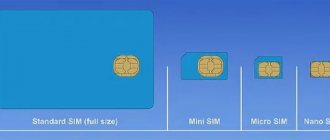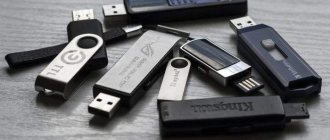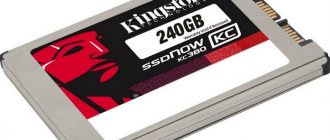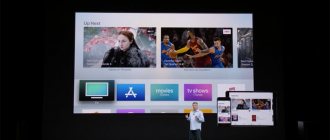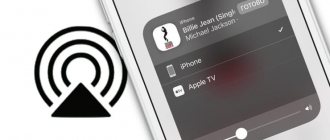While browsing the pages of a flea market in search of a Siri Remote for my Mac Mini 2014, I accidentally came across a rare item from Apple, originally from 2007 - the first generation Apple TV. The former owner asked for a modest $15 for it, and I thought it was an interesting offer for a piece of technological history for a personal collection. But even more interesting was the question of whether this device could be used at the end of 2022. And I just wanted to travel back to the distant year 2007, feel a little nostalgic and share all this with Habr.
First Apple TV
Apple TV was first presented in San Francisco at Macworld Expo 2007. It was not possible for me to appreciate all its charms and capabilities in those years, like most people in our open spaces. Apple offered us a set-top box costing $229 for a version with a 40 GB HDD and $329 for a 160 GB version (these are official prices for the USA, ours were even higher), which was designed to work in conjunction only with the iTunes store, from where videos and other content. That is, Apple TV acted as an addition to a PC with iTunes, from which films were synchronized. Moreover, this was not a rental, but rather a purchase of films.
That’s why Apple TV did not receive mass recognition in the first year and only 400 thousand devices were sold in 10 months. Buying films in digital form was not to the user’s liking - the unusual format, restrictions on the use of purchased films (DRM), it is not clear how and where to store them, and most films are watched only 1-2 times. And films were often released on iTunes very late, or did not appear there at all.
Advertising in the Apple company store in Palo Alto, California, USA. 2007
But a year later, at Macworld Expo 2008, the company announced updated software for Apple TV. Now it is an independent device that does not require synchronization with iTunes. And films can be rented for no more than $5 per new release in HD quality directly on the console.
But I will say this, in those years, none of my acquaintances or friends, or friends of friends of acquaintances had this magnificent (I’m sure it was exactly like that then) device.
A few words about Apple TV from 2007
I won’t do a detailed review of a 15-year-old device, but I’ll briefly talk about the most important things. If you really want to, you can read a detailed review on mobile-review.com. It’s straight from April 2007, so you can enjoy the author’s praise of Apple’s innovative device and understand how good it was then.
The appearance of the first generation Apple TV is more reminiscent of a Mac Mini than a set-top box in the modern sense. To compare dimensions, the photo shows Apple TV 1st and 2nd generations. The build quality and materials used are excellent, even (or even more so) in 2021. Everything is in the spirit of Apple - laconic, aluminum, heavy and monolithic. The upper part of the case with the logo is made of plastic, although it looks and feels very much like glass. No backlash, even after a considerable 15 years. The front panel is minimalistic - only the IR receiver and an LED indicating the operation of the device are brought here.
Apple TV 1 is like four next-generation Apple TVs
The “interior decoration” was also impressive for those years and the tasks assigned to the device. I became the owner of a top configuration, by the standards of those years. At that time, Apple did not see a future in streaming and placed big bets on the consumption of local content. Set-top boxes of this generation were supplied with 2.5-inch PATA disks on board (there were two options available - 40 or 160 GB). In my case, the native HDD Western Digital Scorpio Blue WD1600BEVE-40A0HT0 with a capacity of 160 GB is installed. The “apple” on the sticker is responsible for the sign of being native. Based on the production date of the hard drive (10/25/2009), we can conclude that my copy is one of the last to be released for sale, because sales of this generation were discontinued in September 2010. From the serial number of the Apple TV device itself (YM94900HYSW), I learned more accurate information - it was produced at the Foxconn plant in China in the first half of December (49 week) 2009.
The top of the case is made of quality plastic, but looks and feels like glass
A distinctive feature of the first generation Apple TV is the Intel processor. In all subsequent generations, Apple used its own with ARM architecture.
Intel processor, namely single-core Pentium M with a frequency of 1 GHz (“Crofton”). DDR2 RAM – 256 MB with a frequency of 400 MHz. The graphics card is handled by an Nvidia GeForce Go 7300 video card with 64 MB of memory. The official list of supported screen resolutions includes 480p and 720p.
Photo of the internal structure of the first generation Apple TV
On the back of the Apple TV, the number of interfaces is plentiful. There is an HDMI output (video and audio), Ethernet and USB connectors, an analog audio output on two RCA tulips, an optical audio output, and a component video output.
In addition to 100 Mbit Ethernet, our “aluminum box” can also work over the air, thanks to the built-in 802.11n wireless network adapter. The CM94321MC chip from Broadcom is installed.
Apple TV first generation. Back view
The power supply is built-in and that's great, not like the new iMac on M1 in 2022...! Although this makes the sealed case quite hot. But time has already tested this decision - Apple TV is still with us and has quietly lived until 2022. In the vastness of the Internet, I generally came across information about how users turned off the fan in order to completely eliminate noise. And, according to their words, even without a fan, the device feels great after many years of use.
What's an Apple TV without a remote control?
Apple Remote included with 1st generation Apple TV
This generation had a white plastic Apple Remote with six buttons on board. Works via an IR transmitter, powered by a CR2032 lithium battery.
By modern standards, the remote control is very small and looks and feels very unusual. Its dimensions are only 83x32x8 millimeters. But there's definitely something there... Apple knew what they were doing. Of course, compared to modern Siri Remotes, the one from 2007 lacks Bluetooth support, a microphone, an accelerometer, a gyroscope and a touch surface. Considerable response, and in general the speed of work leaves much to be desired. This remote control was clearly not ready for our realities. It can work, but will probably be annoying in places. Although it is an unusual device in appearance, tactility and in the hand, I liked it. The main block of five buttons is exactly the same as in the iPod Shuffle, if anyone remembers such dinosaurs among audio players. I personally still use the first generation “clothespin” on my runs.
As for the software part, Apple TV in this generation uses an EFI bootloader (in all subsequent ones it is already iBoot) with Mac OS X version 10.4 “Tiger” pre-installed.
The Front Row media player is installed on top of the operating system.
This whole story with Front Row in 2022 definitely doesn’t make sense and using the old first-generation Apple TV as a media center in its basic form won’t work. Without tvOS and the App Store in the modern world of Apple consoles, “there will be no movie”...
So could there be a use for the 1st generation Apple TV in late 2021? Having spent several free evenings with this device, I can confidently say that yes. I have highlighted several of the best options and will consider each of them in detail so that you can reproduce it with your device.
All the options described below became possible only because the first Apple TV was built on Intel. Therefore, we have a little more options than Apple offered out of the box in 2007.
Who should buy the updated Apple TV 4K set-top box
I’ll say right away that if you have never had an Apple TV 4K, or had a previous generation set-top box - Apple TV HD, you should definitely buy a new gadget in 2022 with a reserve for the future. Because with the current development of streaming services and the range of content, this purchase will be relevant for at least another 3-4 years. It’s also worth taking a closer look at the new set-top box for fans of sports broadcasts, for whom it is very important to output 4K HDR video at a high frequency, and for whom a modern TV allows this to be implemented.
I recommend the same to game lovers. For movie fans and other owners of the 2022 Apple TV 4K, I don’t think it’s worth spending money on an upgrade just yet. The fact is that at the moment there is simply not a single film in 4K HDR with a frequency of 60 Hz, much less 120 Hz, and most likely there will not be. Well, not a single projector today supports HDMI 2.1 with all the ensuing consequences. Apple will introduce all the described innovations sequentially and primarily for televisions; as for projectors for home cinemas, the 2022 set-top box will last for several more years.
What the first Apple TV could become today:
- Still an HD media center with support for YouTube and IPTV
- Debian based torrent client (with or without desktop environment)
- A beautiful interior item
If with the last option everything is very clear - this is a truly beautiful aluminum device with the logo of one of the largest corporations in the world, originally from Cupertino, and can take pride of place on your home shelf, then the first two options should be examined in more detail.
Turn Apple TV into a media center with Kodi
In order to get the device to play video, stream TV or listen to music again, we will need to load Linux on it. To do this, you can use the atv-bootloader and install the operating system yourself. But there is a shorter way - a ready-made assembly of the Debian operating system with Kodi on board, built using the same atv-bootloader.
Previously, the project was called Crystalbuntu - today it is OSMC (Open Source Media Center). It is based on Linux kernel version 4.2.3-25 and Debian 8.9 “jessie” with Kodi 17.4 “Krypton”.
Debian 8.9 "jessie" is a product from mid-2022
The installation is as automated as possible and will not require any special effort or skills from you. Requires any USB drive and OSMC installer. The latter is available for Windows and Mac OS. When preparing a bootable flash drive, two options are offered - USB or HDD. In the first option, OSMC is installed on a flash drive and Apple TV will work from it; in the second option, the installer is deployed onto a flash drive and in the future OSMC will be installed on the HDD. I used the second option. There are screenshots under the spoiler, I prepared my flash drive for Mac OS, but under Windows everything is completely identical.
Preparing a bootable OSMC flash drive
The bootable flash drive is ready, insert it into the only USB interface of the Apple TV and plug it into the network. A disc with a penguin will appear on the screen, wait, the installer will do everything himself. Upon completion of the work, the installer will inform the console “Please remove USB stick and unplug the Apple TV. Wait 10 seconds and plug the Apple TV back." We do this, remove the flash drive, turn off the power, wait 10 seconds and turn on the Apple TV again.
After restarting, the OSMC installer should already start. Once the installation is complete, the wizard will prompt you to complete the initial setup of Kodi. I won’t publish screenshots, everything is very clear there. You need to set the language, time zone, select the Kodi skin (OSMC or Estuary) and enable the SSH server (be sure to enable it, it will come in handy).
All is ready! In this simple way you can turn an old Apple TV into a media center.
About Kodi 17.4 on Apple TV
Learn more about setting up Kodi
I will not describe setting up the Kodi media center here. All this in great detail was in my other publications. Below are links to the main points. Everything described was implemented under Kodi version 19.0 and the Kubuntu 20.04 platform, but believe me, the principle is the same. IPTV. How to install and configure which service to choose IPTV. Working with program archives and rewinding KODI Media Library. What is it and how to configure MariaDB and YouTube media library synchronization and external management (android and web interface), as well as iOS device
Ultimately, I was able to connect and configure IPTV, YouTube and external control without any problems. Everything turned out to be not even as bad as I imagined at the very beginning, when I connected the device to a Full HD TV, but there are, of course, things that the Apple TV from 2007 could not cope with in 2022.
What can: ✔ play IPTV broadcasts in HD ✔ play local HD videos ✔ play HD videos on YouTube ✔ play local and online audio content or radio ✔ play audio and video content from a local network (smb/nfs) or from USB -storage
What it cannot: ✘ play IPTV broadcasts in 1080p ✘ view torrent streams, for example, in Elementum. Even at 720p
From the first list of tasks that Apple TV coped with, I mean comfortable operation, without any slowdowns, jerks, freezes and freezes, or even system crashes. IPTV works great in HD, without particularly loading the system.
System load when watching IPTV in HD quality
It copes even better with local video. But again we are talking only about HD. There was an attempt to play a 4 GB WEBRip video in 1080p. There was no fire, the video was played, but it was 10-15 frames per second, offhand. The situation is similar with IPTV in 1080p.
In general, with Full HD, pass. But if you really want to, then you can. Broadcom has the BCM970015 Crystal HD hardware decoder. It costs about $15 on AliExpress. It will need to be installed in a mini PCI Express instead of a wireless module (Ethernet will remain). With this decoder, Apple TV will handle even heavy 1080p videos without any problems. Supports H.264/AVC, MPEG-2, VC-1, WMV9, MPEG-4, DivX®, Xvid and AVS decoding.
Online viewing of torrents was also unsuccessful. I tried using Elementum. We managed to install version 0.0.52 x86, but when launched, the add-on selects the entire available amount of RAM and swap, and Kodi reports this with an “Out of memory” error and asks to reboot the system. As a result, Elementum failed to launch. I think that even if you expand swap, nothing good will come of it. The add-on really requires a lot of resources and this device definitely won’t cope with online viewing. I know, because my home media center with 4 cores and 8 GB of RAM can use 4 GB of RAM when playing streams with an average LA of about 3.
Which remote is used in the new Apple TV 4K
One of the most important differences of the updated set-top box is the completely new Siri Remote. For our region, it is called Apple Remote, since Siri and voice search in tvOS are not available in Russian. The previous touchscreen remote control was a masterpiece of design and engineering, but many in our Telegram chat could not get used to the swipe controls on the top, touch-sensitive and clickable panel. And they sighed, remembering the old aluminum remote control with a ring that could be pressed at the top, bottom, left and right, and confirm the choice with a button in the middle.
The new remote is also made of solid silver aluminum with black buttons and looks quite stylish. It combined the idea of a ring with four buttons and a selection button in the center with a touch-sensitive panel and called it all a touch clickpad. Now you can select objects in the tvOS interface by pressing the buttons on the sides of the ring, to scroll through a long playlist you can swipe your finger on the clickpad, and to accurately navigate through the movie (fast forward and backward) you need to slide your finger along the ring, just like the famous iPod once did .
Also among the innovations of Siri Remote, the button for calling the voice assistant has moved to the side, similar to the side button of the iPhone, when you hold it, Siri actually launches. A nice bonus was the addition of a mute button in the form of a crossed out speaker and a power control button for the TV or receiver, most likely via the IR port. This is very reminiscent of remote controls from Chinese TV set-top boxes on Android, such as Xiaomi Mi Box. For me, for example, the power on/off button is not relevant, since any modern TV turns on perfectly via the HDMI CEC protocol when the set-top box starts up and turns off when it goes to sleep.
Similarly, you can configure interaction with sound bars and receivers. Therefore, the innovation will be appreciated either by owners of old TVs, or by those who, in addition to Apple TV, also have an Android set-top box like NVidia Shield or Xiaomi Mi Box, a Sony PlayStation console or Microsoft XBox connected to different HDMI connectors at the same time on a modern TV, and in this regard, between All these gadgets have conflicts via the HDMI CEC protocol.
This remote control is a true masterpiece of ergonomics and design.
But there is also a very sad moment - the new Siri Remote (Apple Remote) has lost the gyroscope and accelerometer , which were in the previous touch glass remote control and allowed you to play many games from the App Store using the remote control instead of a gamepad.
I remember how we played Asphalt 8 and Hit Tennis 3 like this. Now, in order to play games on the updated console, you will either have to find an old remote control or buy an additional gamepad. However, in fairness, I note that two years ago, with the launch of Arcade, games appeared that required a gamepad to be connected to the console, and the number of such games is constantly growing, so I don’t find anything surprising in the fact that Apple first added support for the XBox Wireless Controller and PlayStation DualShock, which became possible to use along with the more expensive SteelSeries Nimbus+ certified for MFi, and then “cut out” the gaming functions from the native remote control from the console.
We invite you to subscribe to our channel in Yandex.Zen. There you can find exclusive materials that are not on the site.
Network storage (smb)
A torrent downloader requires some kind of network storage, and it is unlikely that the 160 GB Apple TV hard drive is suitable for this role (and this is in the best case, because it could be 40 GB). One solution to the issue is to use a single USB interface and connect an external hard drive to it.
Since this is Linux, our external media needs to be mounted in some directory. We will share this directory on the network via samba and mount the external drive into it. This is how we will get a full-fledged torrent client with network storage.
Let this be the /mnt/smb directory. Create and assign read and write rights
sudo mkdir /mnt/smb sudo chmod -R 0777 /mnt/smb
As we have already decided, we will share the directory using samba. Install the required package
sudo apt-get install samba
Configuring samba
sudo mcedit /etc/samba/smb.conf
If you do not plan to keep “secret” information there, you can use guest access without a password. At the end of the configuration file we insert:
[smb] comment = smb path = /mnt/smb browsable = yes writable = yes guest ok = yes read only = no force user = force nobody group = nogroup force create mode = 0777 force directory mode = 0777
And restart the samba service
sudo /etc/init.d/smbd restart
You can check the availability of the directory and the availability of read and write rights from other devices.
Now we connect our external USB drive and determine its UUID. In my case it is sdb5 with one 500 GB NTFS partition and UUID 7B5F89C2074A5C3E.
Determining the UUID of an external USB drive
We will mount via fstab. Open for editing
sudo mcedit /etc/fstab
And at the end of the file we add the mount parameters for our drive, save
UUID=7B5F89C2074A5C3E /mnt/smb ntfs rw,nosuid,nodev,relatime 0 0
We mount it, to be on the safe side, you can also reboot the system and make sure that everything works correctly when you start the Apple TV.
sudo mount -a
Now all that remains is to change the path for downloading torrents to our mounted and shared USB drive (by default, qBittorrent uses /home/osmc/downloads). This can be done through the settings in the web interface.
Small element, but so much functionality
Until recently, very large restrictions were imposed on television. Public or digital television set-top boxes allowed one to choose from a limited number of channels and programs currently broadcast. However, those days are gone—streaming and VOD apps have become a huge hit.
Not every TV model guarantees Internet access . However, this does not mean that you need to immediately purchase a newer model. In many cases, proper mounting is all you need. One of them is Apple TV. What is this?
This is a device that will give you access to many applications as well as movies collected by Apple. How to do it? Quickly and without any effort on your part!
What will you need in addition? Which generation should you choose? Is it possible to connect this gadget to every TV? How does Apple TV work? Find answers to these and many other questions below!
Removing Kodi to the background
Since we used the ready-made OSMC operating system with Kodi on board, which is intended primarily as a media center, Kodi starts automatically when the system starts. But if our Apple TV will only serve as a torrent client, then we don’t need Kodi. We already have limited hardware resources, and this is a great opportunity to free them up at least a little.
The creators of this OSMC build followed the same path as us - through the systemd subsystem. The unit responsible for running the Kodi media center is /etc/systemd/system/multi-user.target.wants/mediacenter.service.
Removing Kodi from startup
sudo systemctl disable mediacenter
Thus, on our Apple TV we only have a Linux console. And this gave us the opportunity to free up no less, but as much as 150 MB of RAM. Don't forget that it is only 256 MB. So this is a good result. The load on the processor also dropped.
System load when idle and when Kodi media center is stopped
We did not remove Kodi, but only prevented it from starting with the system. If necessary, you can always start it manually:
sudo service mediacenter start
How to calibrate your TV using iPhone and the new Apple TV 4K
At the presentation, we were shown another feature of the updated set-top box. Now, when the “ Color Balance” on the iPhone, with which you configured the set-top box, you need to tap “Continue” and bring the smartphone to the TV with the front camera, holding it in the frame that appears on the screen at a distance of no more than 2.5 cm.
As a result, more Apple magic should happen. Using iPhone sensors, the Apple TV 4K output to the TV will be calibrated so that the latter shows the correct gray scale balance and correct colors. It will be interesting to see what effect this has in reality, but I think film fans will prefer to manually calibrate their TVs with the appropriate settings.
Now, to correctly adjust the color balance, you just need to bring your iPhone to the TV
LXDE Desktop Environment
If, however, the console is not enough and you want something more, then you can attach a desktop environment to our Debian on Apple TV, for example, LXDE (Lightweight X11 Desktop Environment).
No sooner said than done. Install and launch
sudo apt-get install lxde startx
LXDE 8.9 desktop on Apple TV
Habr in Linux/Firefox on Apple TV. How do you like that, Steve Jobs?
Of course, the browser on the old Apple TV is just a joke. A single-core “monster” with a frequency of 1 GHz opened the main page of Habr for about 5 minutes. If you want to look at this for yourself, keep in mind that the browser was not supplied with the system and must be installed manually. Only use the iceweasel package to install Firefox - in those years it was a transition package for Firefox ESR.
sudo apt-get install iceweasel More screenshots of Apple TV with LXDE
Desktop
htop
qBittorrent
Summary information about the system
Operating system information
Processor Information
Hard drive information
Information about network interfaces
CPU Blowfish Benchmark
CPU Fibonacci Benchmark
Logout
In order for LXDE to start when the system starts, we again turn to systemd and create a unit
sudo mcedit /etc/systemd/system/lxde.service
Paste content
[Unit] Description=LXDE After=multi-user.target [Service] Type=idle ExecStart=/usr/bin/startx [Install] WantedBy=multi-user.target
And we rebuild all systemd services and launch our service with LXDE, and also add it to startup
sudo systemctl daemon-reload sudo systemctl start lxde sudo systemctl enable lxde
LXDE is not as power hungry as Kodi, but it did deprive us of precious 50 MB.
System load during idle time when LXDE, qBittorrent, samba and ssh are running
Apple TV - convenience, functionality and the future
Are you an Apple product owner? Yes? Then be sure to get an Apple TV. What this is, of course, we don’t need to explain to you anymore. Create a smart home network with this multifunctional accessory.
Please note that Apple TV is not just a TV or monitor attachment. This is also a “remote control” for controlling the equipment of your apartment. Before you can, for example, turn on the light, play music, your favorite movie or other video material in your web browser.
Apple TV supports the latest and most convenient technologies, such as Wi-Fi and Bluetooth. The manufacturer made sure that its operation was simple and as user-friendly as possible. That's what you can expect from tech giant Apple, anyway. After all, the brand is famous for its intuitive products!
Upgrade Apple TV. Replacing HDD with SSD
As I said at the beginning of the publication, as an internal drive we have a Western Digital Scorpio Blue WD1600BEVE-40A0HT0 HDD with a parallel interface (PATA) and a maximum read speed of 62 MB/s from the specification. In practice, the read speed is only about 30 MB/s.
Let's try to speed up the system, I have some kind of Chinese “noname” mSATA SSD 32 GB and an mSATA to IDE adapter on my farm.
What is an adapter
After replacing the hard drive with an SSD, the system was reinstalled. And at the first start the difference was noticeable. Before the Kodi main menu, the console loaded much faster. I didn’t notice any major differences in further work, but Kodi definitely became easier to run videos from an SSD than from an HDD. This is especially noticeable when rewinding a video. The interface and navigation remain the same - everything is also responsive and smooth.
For the purity of the experiment, I decided to check in synthetics whether I received an increase in speed. I will use the dd utility as a benchmark.
To test the disk writing speed, I will write a 1 MB tempfile 1024 times
dd if=/dev/zero of=tempfile bs=1M count=1024
To check the reading speed, I clear the cache and read the same temporary file tempfile
sudo /sbin/sysctl -w vm.drop_caches=3 dd if=tempfile of=/dev/NULL bs=1M count=1024
Native HDD Western Digital. Read and write speed of about 30 MB/s
mSATA SSD. Write speed - 82 MB/s, read speed - 87 MB/s
The result is obvious - the reading and writing speed has increased almost 3 times. With this I finished the upgrade. There was, however, also an unsuccessful attempt to update the software part - in the osmc repository I found package branches for the Debian 9 “stretch” and Debian 10 “buster” distributions. But, apparently, they are intended for Vero 4K devices from OSMC, because they did not want to get up on Apple TV.
Apple TV - find out what it can do!
Do you already know what Apple TV is, but don't yet know all its features? So, it's time to find out what content you will have access to and what else you can do with this TV box!
Access to gaming apps, VOD and many other options
You may not have heard of the Apple TV app yet. What is this? This is a platform where you will find access to a wide range of movies and TV series. The Apple TV+ app is often confused with Pickup. You must first purchase the device to access the mentioned application. This way you will also benefit from Apple Original production . You won't find her anywhere else!
However, this does not exhaust all the amenities at your disposal. Therefore, the following should still be mentioned:
— iTunes is an application that allows you to purchase and download music content.
— Apple Arcade is a gaming platform. Contains more than a hundred popular games among Apple users.
— VOV platforms — including the most popular ones, for example, Netflix, HBO GO, Ipla, Amazon Prime Video .

